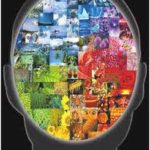See a photo of David, his bio, and Part 1 of this Q&A.
Q&A with David Sidwell, Question 2
Q: How did you initially become involved with story/storytelling/ narrative? What attracted you to this field? What do you love about it?
A: I come to storytelling first as a performer. I’m a professional storyteller, and I actually make a few dozen dollars a year telling stories at conferences, concerts, festivals, and the like. I’ve told stories across the U.S. in New York, several cities in California, Chicago, New Orleans, and many places in between. I enjoy it. In college, one of my professors, also a storyteller, invited me to tell stories to a bunch of Boy Scouts. With no microphone, I was glad I was trained the old way where performers actually had to project! There were about 500 scouts there, all spread out on the grass before me, and I began to tell some stories. I got all caught up in the telling, seeing the images and really getting into the story and the characters, and when I came out of my reverie about 30 minutes later, all of the scouts were crowded around me in a tight bunch, listening to my story with rapt attention. I was hooked!
I’m a theatre guy: playwright, director, producer, auteur. But I’m not an actor. However, I love the stage and I love being in front of people. I’m a popular keynote speaker and I love it. Storytelling fills the gap; I get to be a performer, but I also create my own text, direct myself and am in charge of all aspects of what I do. From a performance perspective, it’s an art form that attracts me deeply.
One thing I really love about storytelling is that it is a sharing of images rather than information. Images have so much power that data will never have. I like to say that when we say we “see” things in a story, we are actually using “see” as a metaphor for using any or all of our seven senses: (1) seeing, (2) hearing, (3) touching, (4) tasting, (5) smelling, (6) seeing dead people, (7) emotions; I’m always surprised at how often the sixth sense is used in storytelling! In my various career paths, I’ve found storytelling to be of central importance in my fine art photography, as a program director of a nonprofit museum, marketing/public relations/branding director, teacher, and now as a nonprofit business consultant. Each of these fields use images as their primary means of influencing and motivating people, and storytelling is both a practical and theoretical foundation from which to work.
